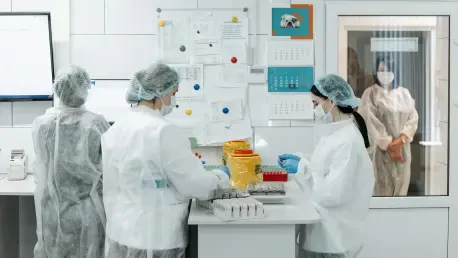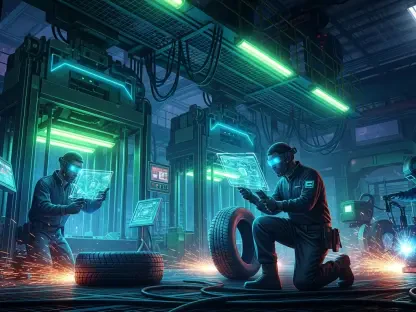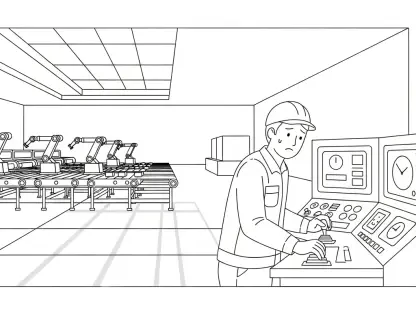What does it take to turn a forgotten industrial site into a powerhouse of life-saving innovation? In Saratoga Springs, New York, a sprawling one-million-square-foot facility, once a magazine printing plant, is undergoing a dramatic transformation, with Regeneron Pharmaceuticals pouring $2 billion into this space. This bold move promises not only to revolutionize biopharmaceutical production but also to reshape the economic landscape of the region. This ambitious project is more than just bricks and mortar; it’s a lifeline for communities and patients battling cancer and infectious diseases, signaling a new era of hope and opportunity.
The significance of this investment cannot be overstated. At a time when global supply chains are strained and the demand for critical medications surges, Regeneron’s expansion addresses a pressing need for increased domestic manufacturing capacity. This initiative is poised to more than double the company’s production capabilities in New York State, creating hundreds of jobs and reinforcing the United States’ position as a leader in biotech innovation. Beyond the numbers, this story is about resilience—turning a dormant brownfield site into a beacon of progress and security for both health and economy.
A Strategic Leap for Health and Prosperity
The scale of Regeneron’s commitment in Saratoga Springs is staggering. This $2 billion project is set to revitalize a neglected industrial space, equipping it with cutting-edge technology to produce medications that target some of the most challenging diseases. Governor Kathy Hochul has hailed the expansion as a game-changer, noting its potential to bolster New York’s standing in the biotech sector. The ripple effects extend far beyond the facility’s walls, promising a surge in local employment and a renewed sense of purpose for the community.
Unlike many corporate endeavors, this isn’t just about profit margins. The initiative tackles a critical gap in the biopharmaceutical industry, where capacity shortages have hindered the timely delivery of vital treatments. By focusing on domestic production, Regeneron is taking a stand against the vulnerabilities exposed by global disruptions, ensuring that patients have faster access to therapies. It’s a calculated risk, but one that could redefine how the industry approaches scalability and self-reliance.
Timing That Couldn’t Be More Crucial
The biopharmaceutical sector is at a pivotal moment, wrestling with supply chain bottlenecks and an urgent call for localized manufacturing. Regeneron’s investment arrives as a timely response, aligning with national priorities to secure medical resources within U.S. borders. With diseases like cancer and emerging infections demanding innovative solutions, the need for expanded production has never been more acute. This expansion isn’t merely a corporate milestone; it’s a strategic move to safeguard public health.
Moreover, the focus on U.S.-based facilities underscores a broader trend of prioritizing economic stability and national security. By investing in New York, Regeneron is helping to insulate the country from the risks of over-reliance on foreign supply chains. This approach not only strengthens the industry’s resilience but also ensures that breakthroughs in medicine reach those who need them most, without unnecessary delays or dependencies.
Unpacking a Multi-Billion-Dollar Blueprint
The Saratoga Springs project is just one piece of a larger puzzle. With a $2 billion infusion, the site will see comprehensive redesign and reconstruction, paving the way for future growth while generating 500 short-term construction jobs and 1,000 permanent positions. This transformation of a brownfield location into a state-of-the-art hub exemplifies how innovation can breathe new life into forgotten spaces, benefiting both the environment and the economy.
Regeneron’s vision extends across the state and nation, with an additional $3.6 billion allocated for its Tarrytown campus and a new fill-finish facility in Rensselaer, New York. On a national scale, plans for over $7 billion in infrastructure investments between New York and North Carolina highlight a relentless drive to expand U.S. manufacturing. This comprehensive strategy reflects a deep commitment to meeting growing demand while fostering regional development.
A cornerstone of this expansion is a 10-year, $3 billion partnership with Fujifilm Biotechnologies at their $3.2 billion Holly Springs, North Carolina campus. This collaboration effectively doubles Regeneron’s large-scale U.S. manufacturing capacity, allowing the company to prioritize drug development while Fujifilm manages production logistics. Such alliances demonstrate a smart balance of independence and cooperation, addressing industry-wide shortages with precision and foresight.
Leadership Insights Driving the Mission
Voices from Regeneron’s top brass shed light on the motivations behind this massive undertaking. CEO Leonard Schleifer, speaking during a recent earnings call, emphasized the broader implications of domestic manufacturing, stating, “Building our infrastructure in the U.S. isn’t just a business choice—it’s a necessity for jobs, growth, and national security.” His words paint a picture of a company acutely aware of its role in shaping both industry and society.
Echoing this sentiment, Daniel Van Plew, executive vice president, elaborated on the Fujifilm partnership, saying, “Their capabilities free us to focus on innovation and product launches, directly confronting the capacity crisis.” These perspectives reveal a dual focus: overcoming technical challenges while maximizing societal impact. It’s clear that Regeneron views its expansion as a mission, not merely a milestone, with leaders steering toward a future where health solutions are both accessible and sustainable.
Setting a Standard for Industry Transformation
Regeneron’s approach offers valuable lessons for others in the biopharmaceutical field. By redeveloping underutilized sites like the Saratoga Springs facility, companies can merge economic revitalization with environmental stewardship. This model of brownfield transformation shows how to turn liabilities into assets, creating jobs and infrastructure without sprawling into untouched landscapes.
Strategic partnerships, as seen with Fujifilm, provide another key takeaway. By delegating production to trusted allies, firms can sharpen their focus on research and development, sidestepping the burden of constant facility construction. Additionally, a staunch commitment to domestic manufacturing can fortify local economies and national interests. Targeting regions with skilled labor and robust support systems, much like New York’s Capital Region, can amplify the impact of such investments, setting a precedent for balanced growth across the sector.
Reflecting on a Groundbreaking Journey
Looking back, Regeneron Pharmaceuticals’ $2 billion investment in Saratoga Springs stood as a transformative chapter in biotech history, complemented by billions more in infrastructure across New York and North Carolina. The partnership with Fujifilm Biotechnologies proved instrumental, doubling U.S. capacity while sharpening focus on innovation. Thousands of jobs emerged, communities thrived, and domestic production solidified as a pillar of economic and health security.
As the industry continues to evolve, the next steps hinge on collaboration and adaptability. Companies must seek out strategic alliances to optimize resources, invest in overlooked regions to spur growth, and advocate for policies that prioritize local manufacturing. These actions can ensure that the momentum Regeneron ignited carries forward, building a resilient framework where medical advancements reach patients swiftly and sustainably. The path ahead demands bold vision, and the blueprint is already taking shape.









